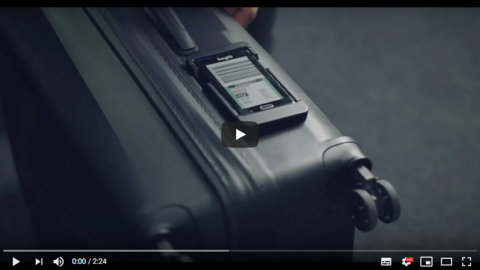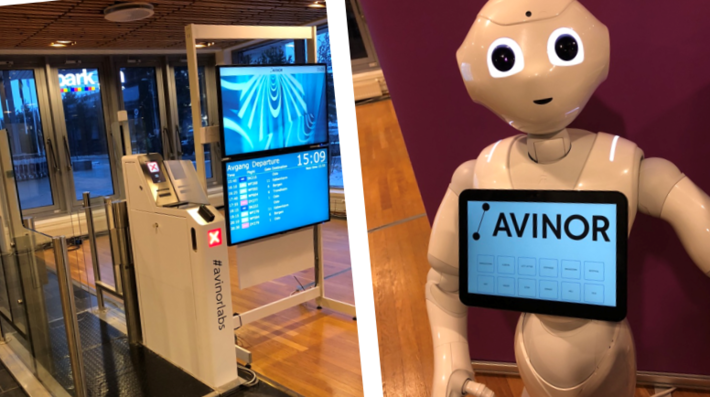Over 6000 passengers completed a survey at the departure gates of eight airports in Norway (Oslo, Bergen, Stavanger, Trondheim, Tromsø, Bodø, Kristiansand, Molde). Passengers were asked to imagine they were taking the exact same trip at one point during the next 12 months, and to select preferences at key stages of their journey, assuming all of the listed options were available.
Strong interest in pre-ordering online from the airport. 60% of respondents to the survey are interested in pre-ordering products and services online from the airport with most interest being in purchasing transport to/from the airport, fast track security and airport lounge access.
Travel Retail Norway started offering the pre-order of tax-free products at five airports in Norway in 2017. Additional products and services are now available including food and drink, electronics and car parking.
However, it seems that passengers are interested in far more options being available.
The paper boarding pass is dead, or is it….? SAS launched mobile boarding passes for passengers using Oslo and Stavanger airports in 2009. Mobile boarding passes are now the most popular choice for passengers at airports in Norway with 39% of respondents to the survey preferring to access their boarding pass via a mobile application. A further 16% prefer to access their boarding pass via text/SMS on their mobile device. It could be said that the paper boarding pass is dead.
However, a significant proportion of respondents (46%) still prefer to carry a paper boarding pass (27% prefer to access it via a self-service kiosk, 15% with staff at a check-in desk, and 4% via a website and printed themselves).
Digital bag tags for checked-in baggage. Approximately three billion paper bag tags are printed at airports worldwide each year. This is still the preferred method of choice for passengers at airports in Norway: 40% of respondents to the survey prefer to print their tag at a self-service kiosk and attach it themselves, 25% prefer to use a paper tag printed and attached by staff at a check-in desk, 4% prefer to use a paper tag that they print (e.g. at home, work or a hotel) and insert in a tag holder on their baggage.
However, almost a third of respondents (32%) prefer to use a digital tag built-in to their baggage that can be updated from an application on their mobile device each time they travel and used to track their baggage throughout its journey. This is a high proportion of respondents given that digital tags are not commonly known about.
They can offer additional features such as reporting mishandled or lost baggage, activating an alarm in the case of theft, and sending notifications when baggage is available for collection, and from which carousel.
A Norwegian company called BagID is currently leading the way with innovations in digital bag tag technology, which was used for the first time by the former Minister of Trade and Industry Torbjørn Røe Isaksen on a domestic flight from Ålesund Airport in 2018.

BagID launch film on YouTube
Self-service bag drops for checked-in baggage. Many airports around the world are introducing self-service bag drops. They were first introduced in Norway at Tromsø Airport in 2008, and are now common at airports in Norway. Two-thirds of respondents to the survey (66%) prefer to use a self-service bag drop. This compares to 25% that prefer to drop their baggage with staff at a check-in desk at the airport.
Off-airport bag drop is receiving interest in some countries and has the potential to reduce congestion and queue times in airport terminals, as well as providing passengers with an opportunity to travel and arrive at the airport “baggage-free”. For example, UK-based company airportr collects baggage from passenger homes in London and the South East of England for most flights from Heathrow Airport, Gatwick Airport and Luton Airport. They also collect from homes in Manchester, Liverpool and surrounding areas for flights from Manchester Airport. The company then completes the bag tag and drop process for their customers.
However, only 2% of respondents to the survey prefer to use such a service – typically those travelling with additional or outsize baggage. A small proportion (6%) prefer to drop their baggage at the airport but before entering the terminal (e.g. at the airport car park or car rental). Only 1% prefer to drop their baggage at an off-airport location (e.g. train or bus station, downtown, cruise ship).
Cashless airports. There has been growing interest in mobile payment applications in recent years, and Vipps, which was developed by DNB and released in 2015, has become popular in Norway.
Credit or debit card is still the most popular method of payment for products and services at airports in Norway (preferred by 70% of respondents to the survey).
However, 26% prefer to use a mobile payment application, of which 20% prefer to use an application that connects card payments to phone numbers such as Vipps or MobilePay, 6% prefer to use an e-wallet such as ApplePay, AliPay, Google Pay, PayPal or WeChat Pay.
Only 4% prefer to use cash.
Passengers want customised information. Globally, most airport passengers carry a mobile device and want to use the device to make their travel experience better. Many airport operators, including Avinor, have recognised this with the launch of their own mobile application, which allows passengers to receive customised information.
More than nine out of ten respondents to the survey (92%) are interested in receiving customised information to their mobile device from the airport with most interest being in flight status information, queuing times and gate information.
Respondents are least interested in receiving information about airport products and services including offers and competitions, or travel planning information such as travel tips and destination information.
Avinor mobile application. Screenshots by Nigel Halpern
A human touch is still preferred for customer services. Despite high levels of interest in using digital technologies at airports in Norway, passengers prefer to deal with staff in person when in need of customer services.
Respondents to the survey could select up to five choices from a list of options. The most popular option was staff in person (selected by 58% of respondents).
Other selected options include: touchscreen self-service information kiosks (53%); QR codes that provide information when scanned using a mobile device (21%); staff via phone or video link (18%); live online chat service with staff (18%); chatbot – an artificial intelligence that can be communicated with via an airport website, mobile application, messaging application, virtual voice assistant or kiosk (17%); augmented reality where travellers look through their smartphone and information is superimposed onto what they see (16%); hologram – 3D image that looks like a real person and offers Siri-like interactivity and announcements (14%); robots that can provide assistance and scan boarding passes to offer personalised information (13%).
Not so many passengers are interested in using their face as their passport. Initiatives such as IATA´s One ID aim to use biometric recognition to identify passengers at each check-point to simplify the airport journey with a document-free process.
However, only 16% of respondents to the survey prefer to use biometric identification (e.g. pre-register their facial and travel details so that they can then pass each check-point by scanning their face instead of using a boarding pass, passport or other ID card).
Almost one-third (32%) prefer to use a paper boarding pass combined with a passport or other ID card if necessary, while 52% prefer to use an electronic boarding pass (e.g. on a mobile device, frequent flyer card or airline smart pass) combined with their passport or other ID card if necessary.

YouTube video on five things to know about One ID
Interest in biometrics grows significantly when it comes to security screening – a common stress point for passengers at airports. More than half of all respondents to the survey (53%) prefer the use of infra-red cameras, facial recognition and other technologies that scan them as they move so that they can walk through security without needing to remove items for screening, while 47% prefer the current process of scanning or showing a boarding pass, then removing items for screening before being screened themselves.
Airports need to build trust on personal privacy. On average, respondents to the survey are “moderately concerned” (a score of 2.6 on a scale of 1 to 5, with 1 being “not at all concerned” and 5 being “very concerned”) about risks associated with using digital technologies at airports.
This was measured across six dimensions of trust: (1) The ability of others to use information about you to put you in danger or to deceive or commit a crime, (2) How information about you is gathered, stored and used by the airport, (3) What the airport does with information about you, (4) That information about you may be used by the airport to implement wrong or deceptive business practices, (5) That information about you may be used by the airport to create preconceived ideas about you, or exclude or treat you with prejudice, (6) That information about you may be used by the airport to reduce your freedom, or to try to control or influence you.
It is therefore important for airports to build trust with passengers when implementing digital solutions by communicating how personal data is handled by the airport and its partners.
More details regarding the survey and its findings can be found here, along with infographics on digital passenger preferences and social and ethical issues
The survey is part of a wider project funded by the Research Council of Norway on the digitalisation of airports. The project is a collaboration between Kristiania University College in Norway, Cranfield University in the UK, and Molde University College in Norway. The Norwegian airport operator Avinor is an industry partner to the project. More information can be found on the project website at: www.digitalairportsnorway.com








DEBATTREGLER I SAMFERDSEL
Har du synspunkter på denne saken, så kom gjerne med dem her i kommentarfeltet! Det du skriver vil i de fleste sammenhenger fremstå som mer interessant og troverdig dersom du skriver under fullt navn. Hold deg til saken, vis respekt og raushet overfor andre og deres meninger. Husk at det du skriver kan bli lest av mange!
Ytringer som inneholder trusler eller annen form for sjikane, vil bli fjernet.
Vennlig hilsen
Samferdsel-redaksjonen